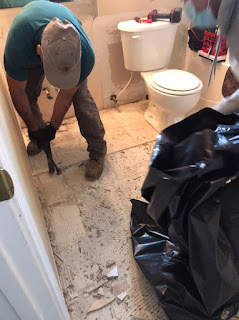How to Identify Mold Growth in Your Sandy Springs Home
Musty Odor:
One of the first signs of potential mold growth is a distinct musty odor in specific areas of your home. Consider it a red flag for mold if you detect an unpleasant, earthy smell, particularly in damp or poorly ventilated areas. Hiring a professional for residential mold inspection in Georgia can help identify the source of the odor and potential mold growth.
Visible Mold:
Apparent signs of mold include visible growth on walls, ceilings, floors, or other surfaces. Mold can manifest in various colors, textures, and shapes, including black, green, brown, or fuzzy patches. If you notice such growth, conduct a thorough mold inspection and promptly initiate mold removal in Sandy Springs.
Water Damage:
Water damage from leaks, flooding, or high humidity is ideal for mold growth. Inspect areas prone to water exposure, such as basements, bathrooms, kitchens, and attics, for signs of discoloration, peeling paint, or warping. Mold often thrives in hidden, damp areas behind walls and under flooring.
Allergic Reactions:
Frequent allergic reactions, such as sneezing, coughing, watery eyes, or skin irritation, may indicate exposure to mold spores. If these symptoms worsen when you're at home and improve when you leave, it's essential to investigate and potentially engage in a residential mold inspection in Georgia to assess the presence of mold.
Humidity Levels:
Georgia's humid climate can contribute to mold growth. Purchasing a hygrometer for accurately measuring indoor humidity levels is recommended. Ideally, indoor humidity should be below 60%. Using dehumidifiers and ensuring proper ventilation can aid in controlling moisture and preventing mold growth.
Hidden Areas:
Look at hidden or less frequented areas of your home during a mold inspection. Check behind furniture, in crawl spaces, and inside closets. Mold often grows in concealed areas, making it crucial to inspect every corner of your house thoroughly.
Conclusion:
Identifying mold growth in your Sandy Springs home through practical residential mold inspection is vital for maintaining a healthy living space. If you suspect mold presence or have encountered any of the abovementioned signs, it's crucial to act promptly. Seek professional assistance for a thorough residential mold inspection in Georgia and initiate proper mold removal in Sandy Springs to safeguard your home and family from potential health hazards associated with mold. A proactive approach will help ensure a safe and mold-free living environment for you and your loved ones.
.jpg)
.jpg)

Comments
Post a Comment